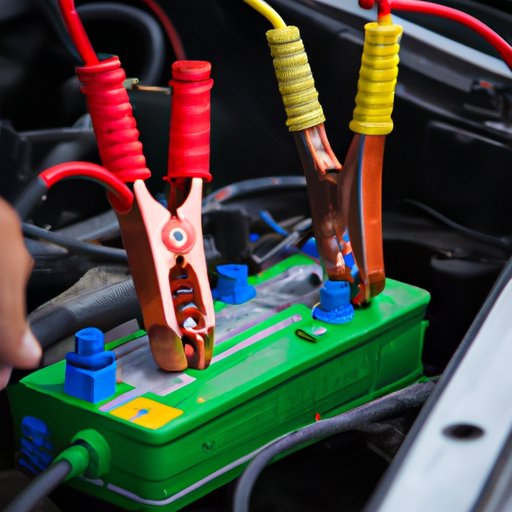Introduction
If you’ve ever had a dead car battery, you know the feeling of helplessness that comes along with it. Fortunately, there is a way to get your car up and running again without having to call a tow truck – jump starting. Jump starting a vehicle involves connecting jumper cables to the battery of another working vehicle in order to supply power to the battery of the car with the dead battery. It’s a relatively simple process that can be done in a matter of minutes, but it’s important to understand the basics before attempting to jump start a vehicle.
The first thing to understand about jump starting is that it should only be used as a temporary solution. According to research from the Automotive Aftermarket Industry Association, “A jump start may temporarily revive a battery, but it does not fix the underlying problem. The best course of action is to get the battery checked out by a professional.” This means that if you’re able to successfully jump start your vehicle, you should still take it to a mechanic to get the battery checked out.
Step-By-Step Guide to Jump Starting
Now that you understand the basics of jump starting, here’s a step-by-step guide to help you get your vehicle up and running again.
1. Check the Battery for Corrosion and Clean Off any Buildup
Before you begin, you’ll want to check the battery terminals for corrosion or buildup of dirt and grime. If there is any buildup, use a wire brush or baking soda and water to clean it off. This will ensure that the clamps of the jumper cables have a good connection to the battery terminals.
2. Connect One End of the Jumper Cables to the Positive Terminal of the Dead Battery
Once the battery terminals are clean, attach one end of the jumper cable to the positive terminal of the dead battery. Make sure the clamp is firmly attached and doesn’t slip off when you let go.
3. Connect the Other End of the Jumper Cable to the Positive Terminal of the Working Battery
Next, connect the other end of the jumper cable to the positive terminal of the working battery. Again, make sure the clamp is firmly attached and doesn’t slip off when you let go.
4. Connect One End of the Second Jumper Cable to the Negative Terminal of the Working Battery
Next, attach one end of the second jumper cable to the negative terminal of the working battery. Make sure the clamp is firmly attached and doesn’t slip off when you let go.
5. Connect the Other End of the Second Jumper Cable to an Unpainted Metal Surface on the Car with the Dead Battery, Such as a Bolt Head
Now, attach the other end of the second jumper cable to an unpainted metal surface on the car with the dead battery, such as a bolt head. Again, make sure the clamp is firmly attached and doesn’t slip off when you let go.
6. Start the Vehicle with the Working Battery and Allow it to Run for Several Minutes
At this point, start the vehicle with the working battery and allow it to run for several minutes. This will ensure that the dead battery has enough charge to start the vehicle.
7. Try to Start the Vehicle with the Dead Battery
Once the vehicle with the working battery has been running for several minutes, try to start the vehicle with the dead battery. If it starts, allow it to run for at least 15 minutes to give the battery enough time to recharge. Once it has recharged, you can turn off the engine and disconnect the jumper cables.
Conclusion
Jump starting a vehicle is a relatively simple process that can help you get your car up and running in no time. By following the steps outlined above, you can easily jump start your vehicle and be back on the road in no time. Just remember to take your vehicle to a mechanic to get the battery checked out afterwards.
Here are some additional tips to keep in mind when jump starting a vehicle:
- Always wear protective gloves and eyewear when jump starting a vehicle.
- Make sure the vehicles are parked close together so the jumper cables can reach both batteries.
- Don’t let the clamps of the jumper cables touch each other while they’re connected to the batteries.
- Never try to jump start a vehicle if the battery is cracked or leaking.
Jump starting a vehicle is a relatively straightforward process that can help you get your car up and running in no time. Just remember to take your vehicle to a mechanic afterwards to get the battery checked out and make sure everything is in working order.
(Note: Is this article not meeting your expectations? Do you have knowledge or insights to share? Unlock new opportunities and expand your reach by joining our authors team. Click Registration to join us and share your expertise with our readers.)
